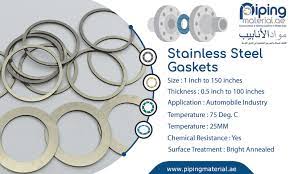What Are the Common Types of Copper Nickel Pipe Fittings?
zCopper nickel pipe fittings are essential components used in various industries, including marine, oil and gas, and HVAC systems. These fittings are known for their excellent corrosion resistance and durability. In this article, we will explore the common types of copper nickel pipe fittings, including brass tubes and brass sheets, their properties, and their applications.
- Copper Nickel Pipe Fittings
- Elbows
Copper nickel elbows are curved pipe fittings used to change the direction of the flow within a pipeline. They are available in various angles, including 45 degrees, 90 degrees, and 180 degrees. Elbows provide flexibility in piping systems, allowing for smooth flow and easy installation.
- Tees
Copper nickel tees are fittings with a T-shaped design, allowing for the connection of three pipes or tubes. They are commonly used in branching pipelines or where the flow needs to be divided into multiple directions. Tees ensure proper distribution of fluids or gases in a system.
- Couplings
Copper nickel couplings are used to join two pipes or tubes together. They provide a secure and leak-proof connection. Couplings are available in different types, such as socket weld, threaded, and butt weld, to suit various installation requirements.
- Flanges
Copper nickel flanges are flat, circular discs with holes in the center for pipe connections. They are used to create a strong and leak-free connection between pipes or valves. Flanges are widely used in industries that require frequent disassembly and reassembly of piping systems.
- Brass Tube
- Seamless Brass Tubes
Seamless brass tubes are manufactured through a seamless extrusion process. They have a smooth and uniform surface, making them suitable for applications requiring high corrosion resistance, such as marine environments. Seamless tubes are commonly used in heat exchangers, condensers, and plumbing systems.
- Welded Brass Tubes
Welded brass tubes are created by welding or brazing brass sheets together. They are cost-effective and suitable for applications that do not require high-pressure resistance. Welded tubes find applications in air conditioning systems, refrigeration, and automotive industries.
III. Brass Sheet
- Flat Brass Sheets
Flat brass sheets are versatile and widely used in various industries. They are available in different thicknesses and widths, making them suitable for applications such as roofing, decorative panels, electrical components, and architectural purposes.
- Perforated Brass Sheets
Perforated brass sheets have regularly spaced holes punched through them, allowing for air or liquid flow. They find applications in industries such as HVAC, acoustic panels, filtration systems, and decorative applications.
- Properties and Benefits
Copper nickel pipe fittings, brass tubes, and brass sheets share several beneficial properties:
- Excellent corrosion resistance: Copper nickel alloys and brass are known for their resistance to corrosion, making them ideal for use in marine and offshore environments.
- High thermal conductivity: Copper-based alloys have excellent heat transfer properties, making them suitable for heat exchangers and cooling systems.
- Ductility and formability: Copper nickel alloys and brass can be easily formed into various shapes, enabling the manufacturing of complex fittings and components.
- Longevity and durability: These materials have a long lifespan and can withstand harsh operating conditions, reducing maintenance and replacement costs.
- Applications
Copper nickel pipe fittings, brass tubes, and brass sheets are used in a wide range of applications, including:
- Shipbuilding and offshore platforms
- Oil and gas processing
- HVAC systems
- Plumbing and water supply systems
- Heat exchangers and condensers
- Electrical and electronic components
Conclusion
Copper nickel pipe fittings, brass tubes, and brass sheets are versatile and reliable materials used in numerous industries. Their corrosion resistance, thermal conductivity, and durability make them suitable for demanding applications. Understanding the common types and properties of these fittings can help professionals make informed decisions when selecting materials for their projects.

Recent Post
What is The Meaning of a Medusa Tattoo?
January 9, 2025
The Meaning of Encanto in Spanish and Origin
January 4, 2025
Equivalent Phrases For “Including But Not Limited To”
December 30, 2024
How To Make Weekend Greetings More Fun?
December 30, 2024
10 Modern Sayings Similar To “Be There Or Be Square”
December 30, 2024









